I Left My Dad Because of My Stepmom—and Found Out That My Life Was a Lie

Superpowers? Believe it or not, some animals have them. From sticky tongues to changing colors, you’re about to meet 13 amazing animals with some very special abilities.
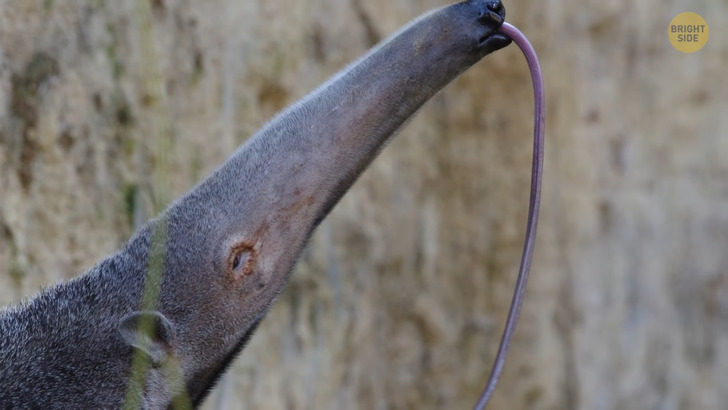
If you have ants in your pants or termites in the house, you’ll wish you lived next door to this animal. The giant anteater lives up to its name: it’s 6.5 ft long, from snout to tail. If it stood up on its hind legs, it would be taller than most people. Good thing it only eats insects. With a diet of ants and termites, it gobbles close to 35,000 of the little critters in a single day! To capture its meal, the anteater is equipped with a long narrow tongue. About two feet long, it is made of small, backward-pointing spines and covered in sticky saliva. When it comes across an anthill, the anteater uses its massive claws to dig into the earth. As the ants go scrambling, it flicks out its tongue — up to 150 times per minute — and the ants stick to it. Slurp! Now, the giant anteater doesn’t have teeth for biting and chewing. It’s part of a group of animals known as edentate, which means lacking teeth. Instead, the giant anteater grinds its food against the roof of its mouth. A tongue like that would certainly make eating popcorn at the movies more interesting!
Another animal with an amazing tongue is the alligator snapping turtle. No, its tongue is not long and sticky. Instead, it has a small, blood-filled addition that looks like a little pink worm. When the turtle gets hungry, it will lay perfectly still under the water. The only thing moving — that worm-like appendage. Any fish that swims in for a closer look quickly becomes dinner! This turtle is also very good at holding its breath. It can stay underwater for 50 minutes while waiting for a bite to eat. Most humans can only hold their breath for 1 to 2 minutes.
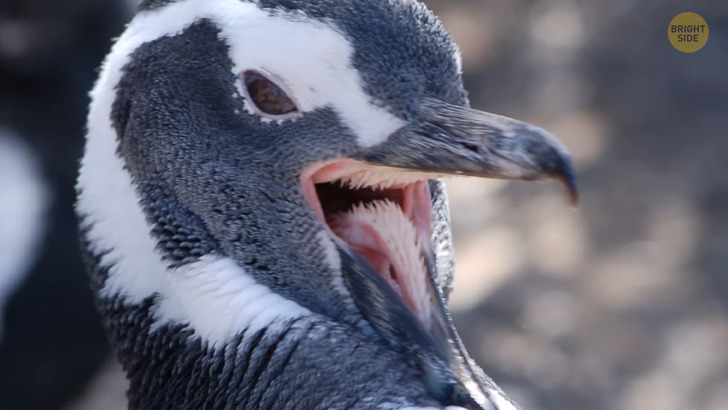
Another amazing tongue? The penguin has a cool one. It doesn’t have any taste buds and is covered in keratinized bristles instead. Yep, keratin is the same stuff that makes up our fingernails and hair. These spiky protrusions point backward into the throat, and the fish can only move in one direction — into the penguin’s tummy.
But one of the coolest tongues in the animal world belongs to the chameleon. Unlike the anteater, the chameleon can only eat one insect at a time. Its tongue ends in a sticky ball of muscle. It shoots the tongue out, and when it hits its prey, that muscle changes shape. It becomes a suction cup, helping grab the insect and pull it back into the chameleon’s mouth. If you’ve ever tried to grab a fly, you know how hard it is. Those things are fast. The chameleon’s tongue, then, needs to be even faster! And it is! It can theoretically travel 8,000 ft per second. There’s no way an insect will see it coming and have time to escape. The chameleon has another special trick — it can change colors. It was once believed that the animal did it as a way to hide from enemies. It would change its color to blend into the background, nearly becoming invisible. But this isn’t really the reason behind this special ability. As cold-blooded animals, chameleons can’t regulate their body temperature like we do. They become darker in color as a way to absorb heat from the sun. And they turn lighter to reflect that heat to cool down. They also use this ability to communicate with other chameleons. One color might tell a rival to stay away. Another can be used to attract a partner. It’s like their version of emojis.
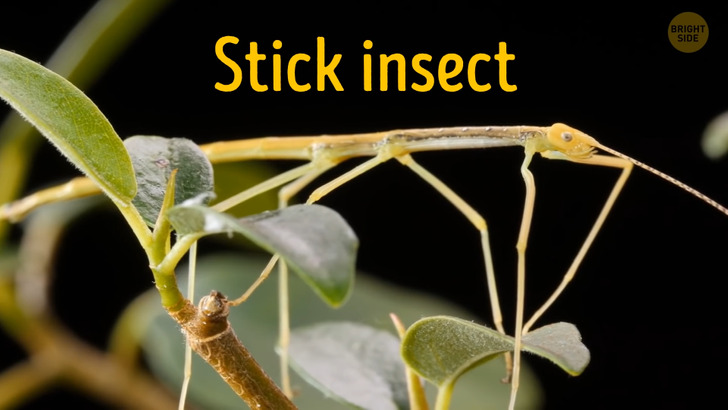
When it comes to color changing, though, the chameleon is no match for the cuttlefish. Related to the squid and octopus, these cute ocean creatures can change the color and texture of their skin. This means they can look like almost anything in their environment, from a random rock on the ocean floor to a piece of floating vegetation. They truly are the world’s champions at Hide and Seek! This ability comes in super handy when trying to hide from dolphins, sharks, or seals that see cuttlefish as a delicious snack.
An animal that relies on camouflage 24/7 is the walking stick or stick insect. As its name suggests, it looks like a twig with legs. It can range in size from one inch to one foot long. And while it’s hiding in the tree, looking like just another tiny branch, it can eat all it wants. As an herbivore, it’s very happy munching on leaves. Just don’t grab one by accident next time you play fetch with Fido!
But there are some animals that do the exact opposite. Through time, they have evolved to actually stand out as a way to warn predators of potential danger. This often involves bright coloring and patterning and is called aposematism. An example of this is the monarch butterfly. When you see one, it’s easy to marvel at its beautiful orange coloring and the pattern on its wings. But with such a bright appearance, surely it makes it easy for predators to find. Actually, the bright color is a warning that eating a monarch can be a bad idea. Because of their diet in the larval stage, monarchs are very poisonous. Any animal that eats one will become quite ill and will never risk doing it again. The white and black stripes of a skunk are there for the same reason. It lets other animals know that if you mess with the skunk, you are in for a nasty surprise.
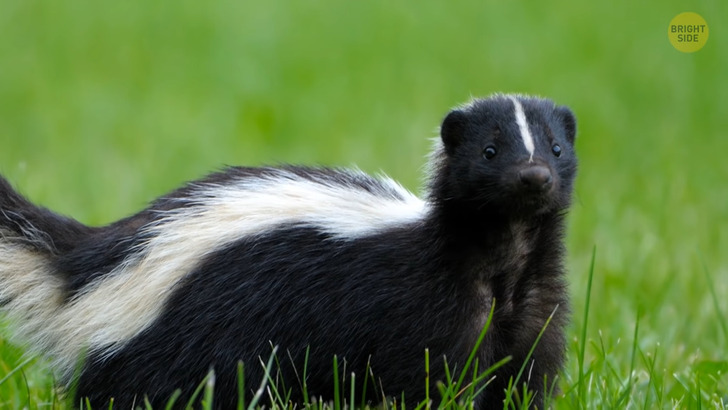
Skunks have two glands in their rear that can emit a noxious spray called thiol. It smells like rotten eggs. The animal can actually aim its spray, making its defense a powerful one. And they can spray 6 times in a row. After that, they will be defenseless for 10-14 days while their glands develop more of that wonderful perfume, Eau De Skunk. And once you’ve been sprayed, it’s very difficult to get it off. Even with a shower. So when you see a skunk in the wild, make sure to give it plenty of room to do its own thing.
Like the skunk, the porcupine gives you 30,000 very good reasons to leave it alone. It’s covered in many sharp quills. And, because of the nearly 800 barbs near the tip of each one, these quills are difficult to remove if you get one stuck in your skin. Luckily, one common belief about porcupines is wrong: they cannot shoot those quills through the air. You have to touch one before it can come off.
There are animals even underwater that have special powers for defense. The electric eel has a very shocking ability — though you’ve probably already guessed what it is. It has organs in its body that can release a powerful electric charge of up to 800 volts, which is higher than the voltage in an electrical outlet! The creature uses this to stun smaller animals or zap its enemies. It can also create electric pulses to communicate, sending out a form of Morse code to other eels.
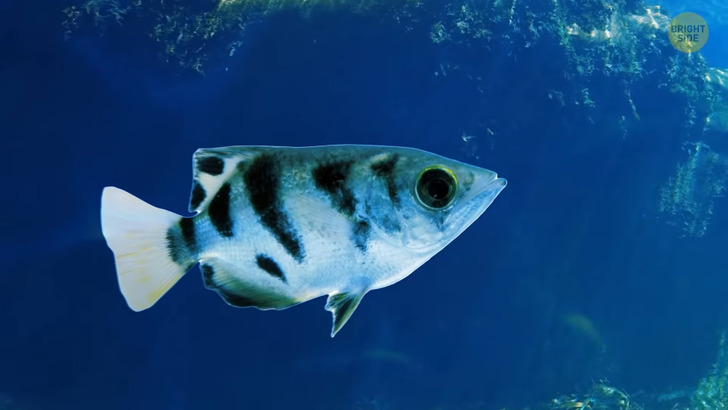
Instead of an electrical charge, archerfish use spit to capture their next dinner. When you first see one, you wouldn’t think it was at all special. It looks like any other fish. Yawn! But wait, because it really does have a superpower. Archerfish feed on insects. Insects, however, don’t live in the water. This makes it difficult for the archerfish to eat. So what does this little critter do? Relying on the special design of its mouth and its great eyesight, it spits out a powerful stream of water. This knocks an unsuspecting insect over. It falls into the water, and the archerfish pounces. The stream is so precise that it can hit an insect up to five feet away.
A creature with a similar, but much more disgusting ability is the horned lizard. It can flood the sinus area near the eye with blood. Then, when it feels threatened, it will squirt that blood out of its eye socket. This can travel as far as four feet! This is enough to startle an enemy, giving the lizard time to escape. It will also use this special skill to remove dirt and dust that gets into its eye.
And finally, the one animal you will probably never meet in your lifetime, even though they live all over the planet, is the tardigrade. Also known as water bears or moss piglets, these are microscopic eight-legged animals that have even gone to outer space and survived. They are pretty much indestructible and have been found in the deep sea and the frozen wasteland of Antarctica. In order to survive in the harshest conditions, they will transform into dehydrated balls called tuns. And in this form, they have been known to survive at temperatures as low as minus 328˚F and as high as 300˚F. Those are all some pretty amazing powers. Well, except for the blood shooting from the eye. That’s just gross.











